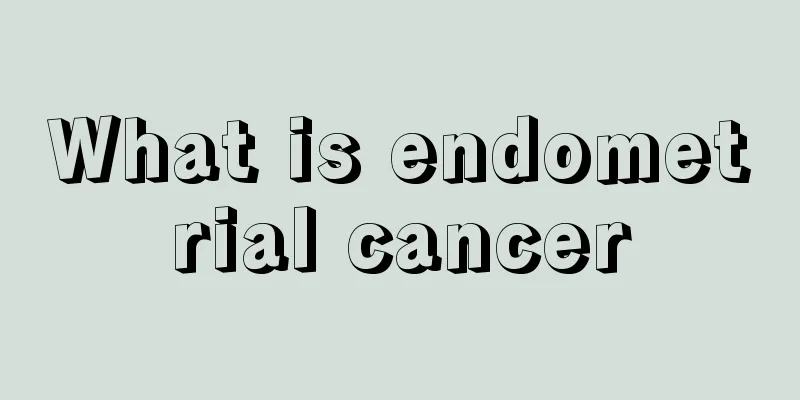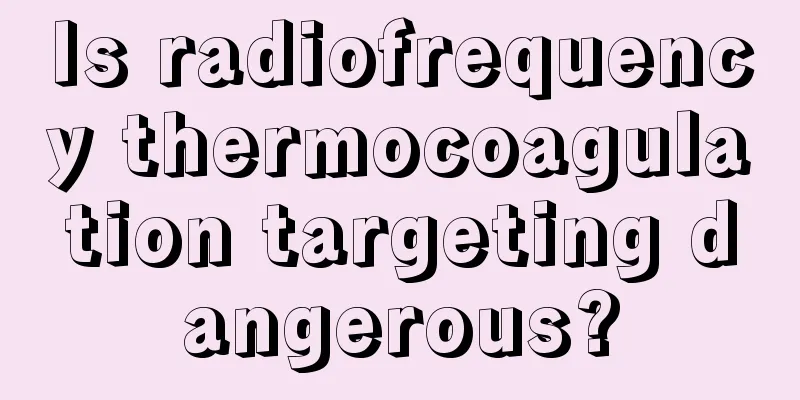What is endometrial cancer

|
What is endometrial cancer? I believe everyone is afraid of endometrial cancer because it is a malignant tumor that poses a great threat to the patient's health. It is more common in perimenopausal and postmenopausal women, and its mortality rate is second only to ovarian cancer and cervical cancer. So, what is endometrial cancer? Endometrial cancer is one of the most common female reproductive system tumors. Its incidence is closely related to lifestyle, and the incidence rate varies in different regions. In North America and Europe, its incidence rate is second only to breast cancer, lung cancer, and colorectal tumors, ranking first among female reproductive system cancers. In my country, with the development of society and the improvement of economic conditions, the incidence of endometrial cancer has increased year by year, and is currently second only to cervical cancer in female reproductive system malignancies. The cause of endometrial cancer is still unclear. It is generally believed that endometrial cancer can be divided into estrogen-dependent (type I) and non-estrogen-dependent (type II) according to its pathogenesis and biological behavior characteristics. Irregular vaginal bleeding is the main symptom of endometrial cancer, which is usually a small to moderate amount of bleeding. In young women or perimenopausal women, it is often mistaken for irregular menstruation and ignored. In postmenopausal women, it often presents as continuous or intermittent vaginal bleeding. Some patients only present with a small amount of bloody vaginal discharge after menopause. In advanced patients, bleeding may be mixed with rotten meat-like tissue. Some patients have varying degrees of vaginal discharge. In the early stages, it may present as thin white discharge or a small amount of bloody leucorrhea. If there is infection or necrosis of the cancerous foci, there may be purulent discharge with a peculiar smell. Sometimes, the vaginal discharge may be accompanied by tissue-like substances. The cancerous foci and the bleeding or infection caused by them may stimulate uterine contraction and cause paroxysmal lower abdominal pain. The treatment principle of endometrial cancer is to choose the appropriate treatment method according to the patient's age, physical condition, lesion range and histological type. Since most endometrial cancers are adenocarcinomas, which are not very sensitive to radiotherapy, surgery is the main treatment. Other comprehensive treatments include radiotherapy, chemotherapy and drugs (chemotherapy, hormones, etc.). |
<<: How to treat prostate cancer with traditional Chinese medicine
>>: Is endometrial cancer a malignant tumor?
Recommend
What are the meridians on the inside of the arm?
The human body is composed of many meridians. If ...
How to use a wine dispenser?
Nowadays, many people like to drink foreign liquo...
What are the nursing measures for lymphoma that need to be kept in mind
The treatment of lymphoma is still mainly based o...
What causes hiccups, chest tightness and shortness of breath?
Modern people are under great work pressure and t...
Is percutaneous interventional treatment effective for advanced lung cancer? The effect is impressive
In the middle and late stages, interventional tre...
Causes of prostate cancer in life Three causes of prostate cancer in life
Prostate cancer is a malignant tumor of the male ...
6 auxiliary diagnostic methods for colorectal cancer
The commonly used auxiliary diagnostic methods fo...
How to provide psychological care for patients with colorectal cancer
In the process of treating colorectal cancer, we ...
What are the treatments for cor pulmonale
The issue of medication for the treatment of cor ...
Photodynamic therapy for esophageal cancer
Esophageal cancer is a common digestive tract tum...
What happened if my period came a week early?
Menstruation is actually a regular behavior for w...
What happens if you eat too much lamb kidneys
Lamb kidneys are a well-known food. Many people p...
What are the early symptoms of liver cancer? Men should pay special attention to 6 early symptoms of liver cancer
The incidence of liver cancer is particularly hig...
Common complications of intravenous infusion
I believe that many people have experienced the u...
What kind of laryngeal cancer symptoms usually appear in life
Laryngeal cancer is one of many types of tumors. ...









